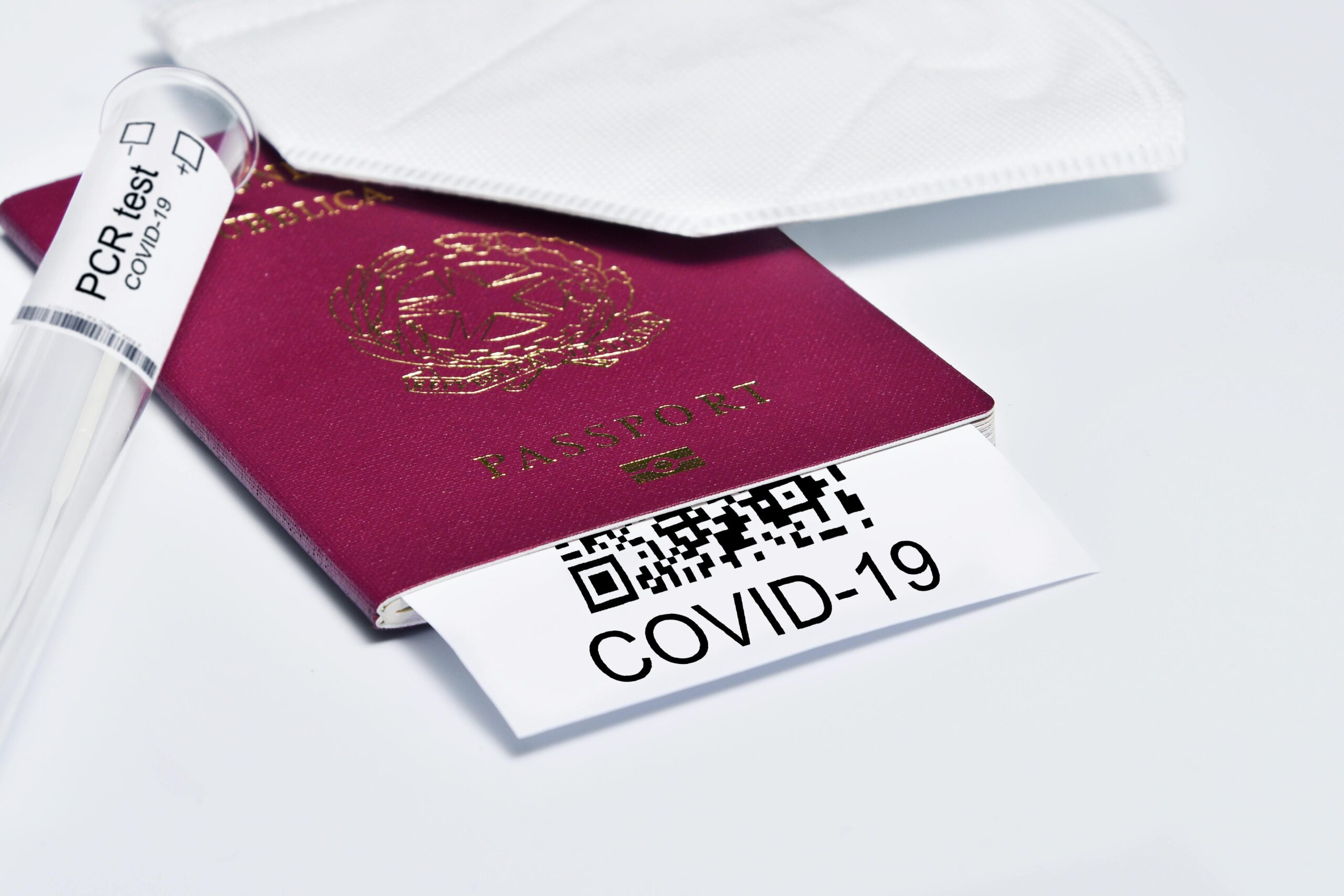The Primary Goal: Securing a New Job Offer and Work Permit
The most direct path to remaining in Canada as a worker is to secure a new job offer and, subsequently, a new employer-specific work permit. This process begins with a successful job search. Once a prospective employer extends an offer, the next step typically involves a Labour Market Impact Assessment (LMIA). An LMIA is a document issued by Employment and Social Development Canada (ESDC) that an employer may need to get before hiring a foreign worker. A positive LMIA confirms that there is a need for a temporary foreign worker and that no Canadian workers are available to do the job. The employer is responsible for undertaking the LMIA application process, which can be complex and requires them to demonstrate significant recruitment efforts for Canadians and permanent residents. Once the employer secures a positive LMIA, you can then proceed with your application for a new work permit, using the LMIA number and the job offer as the basis of your application. It is important to note that certain positions are LMIA-exempt under various international agreements (like CUSMA) or Canadian interest categories (like the International Mobility Program). If your new job offer falls under one of these exemptions, the process can be significantly faster as the employer does not need to apply for an LMIA. Regardless of the route, the new work permit application must be submitted to IRCC, and you must wait for its approval before commencing your new role.
A Strategic Safety Net: Changing Your Status to a Visitor
What happens if your work permit is nearing its expiry date and a new job offer has not yet materialized? In this common scenario, the most prudent course of action is to apply to change your status to that of a visitor. This is accomplished by submitting an application for a Visitor Record. A Visitor Record is a document issued by IRCC that formally extends your legal temporary resident status in Canada. It will have a new expiry date, allowing you to remain in the country legally for an additional period, typically six months. This is an invaluable strategy, as it provides you with the breathing room needed to continue your job search without the immense pressure of an impending status expiry date. It is crucial to apply for the Visitor Record before your current work permit expires. Doing so grants you “maintained status” (formerly known as implied status), which means you can legally remain in Canada under the conditions of your old permit (though you still cannot work) until a decision is made on your visitor application. A Visitor Record does not grant you the right to work; its sole purpose is to maintain your legal stay. Once you secure a new job offer and LMIA (if required), you can then apply for a new work permit from within Canada, while legally residing as a visitor.
Considering Remote Work for a Foreign Employer
In today’s globalized economy, an interesting question arises: can a person who has lost their Canadian job work remotely from within Canada for a foreign employer? The answer is nuanced. According to IRCC guidelines, an individual may be able to perform work for a foreign employer from Canada without a work permit, provided certain conditions are met. The primary condition is that the foreign employer has no business operations, clients, or presence in Canada. The worker must be paid by the foreign entity, and the beneficiaries of their work must be outside Canada. In this specific context, the person is not seen as entering the Canadian labour market. While this can provide a financial bridge during a job search, it is not a long-term immigration solution. This activity does not grant you any status in Canada or a pathway to permanent residence. Your underlying temporary resident status (from your original work permit or a new Visitor Record) must still be valid. Therefore, while working remotely for a foreign company can be a viable temporary solution for income, it should be paired with a clear strategy to either secure a new Canadian job and work permit or make arrangements to depart Canada before your legal status expires.
Frequently Asked Questions
What happens to my status immediately after losing my job on a closed work permit?
Your authorization to work for that specific employer ends immediately. However, your temporary resident status remains valid until the expiry date on your work permit, allowing you to legally stay in Canada while you determine your next steps.
How do I find a new job in Canada after being laid off?
IRCC has a policy that allows you to remain in Canada to search for a new job. Upon receiving a valid job offer, you can apply for a new employer-specific work permit from within the country.
What is a Labour Market Impact Assessment (LMIA)?
An LMIA is a document from Employment and Social Development Canada (ESDC) that a new employer may need to obtain before they can hire you. It confirms that hiring a foreign worker is necessary and that no Canadian worker is available for the position.
Can I start working for a new employer as soon as I get a job offer?
No, you cannot. You must first apply for and receive your new, approved employer-specific work permit before you are legally authorized to begin working for the new employer.
What is a Visitor Record and why would I need one?
A Visitor Record is a document that extends your legal temporary resident status in Canada if your work permit is expiring and you haven’t found a new job yet. It allows you to stay in the country legally to continue your job search but does not permit you to work.
Can I work remotely for a company in my home country while I look for a new job in Canada?
You may be able to, provided the foreign employer has no Canadian clients or business operations and you are paid from abroad. This can provide income but does not solve your immigration status issue; you must still maintain valid temporary resident status in Canada through a work permit or visitor record.
Talk to us to find out more. ->
The content above is not intended to provide legal advice or opinions of any kind and may not be used for professional or commercial purposes.
- Continued Legal Stay: You can legally remain in Canada after job loss, provided your work permit has not expired. Your temporary resident status is intact.In-Canada Application: You are eligible to apply for a new employer-specific work permit from within Canada.Job Search Period: The policy allows you time to look for a new job without having to first change your status or leave the country.Work Authorization: It is critical to remember that you cannot begin working for a new employer until your new work permit application is approved and the permit is issued.
The Primary Goal: Securing a New Job Offer and Work Permit
The most direct path to remaining in Canada as a worker is to secure a new job offer and, subsequently, a new employer-specific work permit. This process begins with a successful job search. Once a prospective employer extends an offer, the next step typically involves a Labour Market Impact Assessment (LMIA). An LMIA is a document issued by Employment and Social Development Canada (ESDC) that an employer may need to get before hiring a foreign worker. A positive LMIA confirms that there is a need for a temporary foreign worker and that no Canadian workers are available to do the job. The employer is responsible for undertaking the LMIA application process, which can be complex and requires them to demonstrate significant recruitment efforts for Canadians and permanent residents. Once the employer secures a positive LMIA, you can then proceed with your application for a new work permit, using the LMIA number and the job offer as the basis of your application. It is important to note that certain positions are LMIA-exempt under various international agreements (like CUSMA) or Canadian interest categories (like the International Mobility Program). If your new job offer falls under one of these exemptions, the process can be significantly faster as the employer does not need to apply for an LMIA. Regardless of the route, the new work permit application must be submitted to IRCC, and you must wait for its approval before commencing your new role.
A Strategic Safety Net: Changing Your Status to a Visitor
What happens if your work permit is nearing its expiry date and a new job offer has not yet materialized? In this common scenario, the most prudent course of action is to apply to change your status to that of a visitor. This is accomplished by submitting an application for a Visitor Record. A Visitor Record is a document issued by IRCC that formally extends your legal temporary resident status in Canada. It will have a new expiry date, allowing you to remain in the country legally for an additional period, typically six months. This is an invaluable strategy, as it provides you with the breathing room needed to continue your job search without the immense pressure of an impending status expiry date. It is crucial to apply for the Visitor Record before your current work permit expires. Doing so grants you “maintained status” (formerly known as implied status), which means you can legally remain in Canada under the conditions of your old permit (though you still cannot work) until a decision is made on your visitor application. A Visitor Record does not grant you the right to work; its sole purpose is to maintain your legal stay. Once you secure a new job offer and LMIA (if required), you can then apply for a new work permit from within Canada, while legally residing as a visitor.
Considering Remote Work for a Foreign Employer
In today’s globalized economy, an interesting question arises: can a person who has lost their Canadian job work remotely from within Canada for a foreign employer? The answer is nuanced. According to IRCC guidelines, an individual may be able to perform work for a foreign employer from Canada without a work permit, provided certain conditions are met. The primary condition is that the foreign employer has no business operations, clients, or presence in Canada. The worker must be paid by the foreign entity, and the beneficiaries of their work must be outside Canada. In this specific context, the person is not seen as entering the Canadian labour market. While this can provide a financial bridge during a job search, it is not a long-term immigration solution. This activity does not grant you any status in Canada or a pathway to permanent residence. Your underlying temporary resident status (from your original work permit or a new Visitor Record) must still be valid. Therefore, while working remotely for a foreign company can be a viable temporary solution for income, it should be paired with a clear strategy to either secure a new Canadian job and work permit or make arrangements to depart Canada before your legal status expires.
Frequently Asked Questions
What happens to my status immediately after losing my job on a closed work permit?
Your authorization to work for that specific employer ends immediately. However, your temporary resident status remains valid until the expiry date on your work permit, allowing you to legally stay in Canada while you determine your next steps.
How do I find a new job in Canada after being laid off?
IRCC has a policy that allows you to remain in Canada to search for a new job. Upon receiving a valid job offer, you can apply for a new employer-specific work permit from within the country.
What is a Labour Market Impact Assessment (LMIA)?
An LMIA is a document from Employment and Social Development Canada (ESDC) that a new employer may need to obtain before they can hire you. It confirms that hiring a foreign worker is necessary and that no Canadian worker is available for the position.
Can I start working for a new employer as soon as I get a job offer?
No, you cannot. You must first apply for and receive your new, approved employer-specific work permit before you are legally authorized to begin working for the new employer.
What is a Visitor Record and why would I need one?
A Visitor Record is a document that extends your legal temporary resident status in Canada if your work permit is expiring and you haven’t found a new job yet. It allows you to stay in the country legally to continue your job search but does not permit you to work.
Can I work remotely for a company in my home country while I look for a new job in Canada?
You may be able to, provided the foreign employer has no Canadian clients or business operations and you are paid from abroad. This can provide income but does not solve your immigration status issue; you must still maintain valid temporary resident status in Canada through a work permit or visitor record.
Talk to us to find out more. ->
The content above is not intended to provide legal advice or opinions of any kind and may not be used for professional or commercial purposes.
- Continued Legal Stay: You can legally remain in Canada after job loss, provided your work permit has not expired. Your temporary resident status is intact.In-Canada Application: You are eligible to apply for a new employer-specific work permit from within Canada.Job Search Period: The policy allows you time to look for a new job without having to first change your status or leave the country.Work Authorization: It is critical to remember that you cannot begin working for a new employer until your new work permit application is approved and the permit is issued.
The Primary Goal: Securing a New Job Offer and Work Permit
The most direct path to remaining in Canada as a worker is to secure a new job offer and, subsequently, a new employer-specific work permit. This process begins with a successful job search. Once a prospective employer extends an offer, the next step typically involves a Labour Market Impact Assessment (LMIA). An LMIA is a document issued by Employment and Social Development Canada (ESDC) that an employer may need to get before hiring a foreign worker. A positive LMIA confirms that there is a need for a temporary foreign worker and that no Canadian workers are available to do the job. The employer is responsible for undertaking the LMIA application process, which can be complex and requires them to demonstrate significant recruitment efforts for Canadians and permanent residents. Once the employer secures a positive LMIA, you can then proceed with your application for a new work permit, using the LMIA number and the job offer as the basis of your application. It is important to note that certain positions are LMIA-exempt under various international agreements (like CUSMA) or Canadian interest categories (like the International Mobility Program). If your new job offer falls under one of these exemptions, the process can be significantly faster as the employer does not need to apply for an LMIA. Regardless of the route, the new work permit application must be submitted to IRCC, and you must wait for its approval before commencing your new role.
A Strategic Safety Net: Changing Your Status to a Visitor
What happens if your work permit is nearing its expiry date and a new job offer has not yet materialized? In this common scenario, the most prudent course of action is to apply to change your status to that of a visitor. This is accomplished by submitting an application for a Visitor Record. A Visitor Record is a document issued by IRCC that formally extends your legal temporary resident status in Canada. It will have a new expiry date, allowing you to remain in the country legally for an additional period, typically six months. This is an invaluable strategy, as it provides you with the breathing room needed to continue your job search without the immense pressure of an impending status expiry date. It is crucial to apply for the Visitor Record before your current work permit expires. Doing so grants you “maintained status” (formerly known as implied status), which means you can legally remain in Canada under the conditions of your old permit (though you still cannot work) until a decision is made on your visitor application. A Visitor Record does not grant you the right to work; its sole purpose is to maintain your legal stay. Once you secure a new job offer and LMIA (if required), you can then apply for a new work permit from within Canada, while legally residing as a visitor.
Considering Remote Work for a Foreign Employer
In today’s globalized economy, an interesting question arises: can a person who has lost their Canadian job work remotely from within Canada for a foreign employer? The answer is nuanced. According to IRCC guidelines, an individual may be able to perform work for a foreign employer from Canada without a work permit, provided certain conditions are met. The primary condition is that the foreign employer has no business operations, clients, or presence in Canada. The worker must be paid by the foreign entity, and the beneficiaries of their work must be outside Canada. In this specific context, the person is not seen as entering the Canadian labour market. While this can provide a financial bridge during a job search, it is not a long-term immigration solution. This activity does not grant you any status in Canada or a pathway to permanent residence. Your underlying temporary resident status (from your original work permit or a new Visitor Record) must still be valid. Therefore, while working remotely for a foreign company can be a viable temporary solution for income, it should be paired with a clear strategy to either secure a new Canadian job and work permit or make arrangements to depart Canada before your legal status expires.
Frequently Asked Questions
What happens to my status immediately after losing my job on a closed work permit?
Your authorization to work for that specific employer ends immediately. However, your temporary resident status remains valid until the expiry date on your work permit, allowing you to legally stay in Canada while you determine your next steps.
How do I find a new job in Canada after being laid off?
IRCC has a policy that allows you to remain in Canada to search for a new job. Upon receiving a valid job offer, you can apply for a new employer-specific work permit from within the country.
What is a Labour Market Impact Assessment (LMIA)?
An LMIA is a document from Employment and Social Development Canada (ESDC) that a new employer may need to obtain before they can hire you. It confirms that hiring a foreign worker is necessary and that no Canadian worker is available for the position.
Can I start working for a new employer as soon as I get a job offer?
No, you cannot. You must first apply for and receive your new, approved employer-specific work permit before you are legally authorized to begin working for the new employer.
What is a Visitor Record and why would I need one?
A Visitor Record is a document that extends your legal temporary resident status in Canada if your work permit is expiring and you haven’t found a new job yet. It allows you to stay in the country legally to continue your job search but does not permit you to work.
Can I work remotely for a company in my home country while I look for a new job in Canada?
You may be able to, provided the foreign employer has no Canadian clients or business operations and you are paid from abroad. This can provide income but does not solve your immigration status issue; you must still maintain valid temporary resident status in Canada through a work permit or visitor record.
Talk to us to find out more. ->
The content above is not intended to provide legal advice or opinions of any kind and may not be used for professional or commercial purposes.
The loss of employment is a stressful event for anyone, but for a foreign national on a closed, or employer-specific, work permit in Canada, it carries an additional layer of profound uncertainty about one’s legal status and future in the country. This guide provides a clear, authoritative overview of the critical steps and strategic options available to navigate this challenging period effectively.
Table of Contents
- Understanding Your Immediate Situation After Job Loss on a Closed Work PermitA Critical Lifeline: IRCC’s Policy for Unemployed Work Permit HoldersThe Primary Goal: Securing a New Job Offer and Work PermitA Strategic Safety Net: Changing Your Status to a VisitorConsidering Remote Work for a Foreign EmployerFrequently Asked Questions
Understanding Your Immediate Situation After Job Loss on a Closed Work Permit
When employment is terminated, it is imperative to understand the precise implications for one’s immigration status. A closed work permit, officially known as an employer-specific work permit, authorizes a foreign national to work in Canada according to the specific conditions printed on the permit. These conditions typically include the name of the employer, the location of work, and the job title. The moment the employment relationship with that named employer ceases, the authorization to perform that specific work also ends. However, a common and dangerous misconception is that the individual’s legal status in Canada is immediately voided. This is not the case. Your temporary resident status remains valid until the expiry date printed on your work permit document. This means you are not required to leave Canada immediately. Instead, you have a window of opportunity to take corrective action. The key takeaway is that you are no longer authorized to work for the previous employer or to begin work for a new employer until a new work permit is secured. Acting otherwise constitutes working without authorization, a serious breach of immigration law with severe consequences, including potential inadmissibility to Canada in the future. The initial period post-job loss should therefore be dedicated to assessing your options and formulating a clear plan to either find new employment and a new permit, or to change your status to maintain a legal presence in Canada.
A Critical Lifeline: IRCC’s Policy for Unemployed Work Permit Holders
Recognizing the precarious situation faced by temporary foreign workers who lose their jobs, Immigration, Refugees and Citizenship Canada (IRCC) has implemented a crucial public policy. Initially a temporary measure, this policy was made permanent in 2023, providing a significant and much-needed safety net. This policy allows most individuals who held a valid work permit and lost their job to remain in Canada and actively search for new employment. More importantly, upon receiving a new valid job offer, they can apply for a new employer-specific work permit from within Canada. This is a monumental advantage, as it avoids the need to leave the country to apply. It provides a grace period for individuals to transition between employers without being forced to uproot their lives. This policy effectively transforms a potential crisis into a manageable transition period. It underscores the importance of not panicking, but rather methodically pursuing the next steps. Understanding the provisions of this policy is the first step toward regaining control of your situation and building a new path forward in Canada.
Here are the key takeaways from this vital IRCC policy for those who have lost a job on a closed work permit:
- Continued Legal Stay: You can legally remain in Canada after job loss, provided your work permit has not expired. Your temporary resident status is intact.In-Canada Application: You are eligible to apply for a new employer-specific work permit from within Canada.Job Search Period: The policy allows you time to look for a new job without having to first change your status or leave the country.Work Authorization: It is critical to remember that you cannot begin working for a new employer until your new work permit application is approved and the permit is issued.
The Primary Goal: Securing a New Job Offer and Work Permit
The most direct path to remaining in Canada as a worker is to secure a new job offer and, subsequently, a new employer-specific work permit. This process begins with a successful job search. Once a prospective employer extends an offer, the next step typically involves a Labour Market Impact Assessment (LMIA). An LMIA is a document issued by Employment and Social Development Canada (ESDC) that an employer may need to get before hiring a foreign worker. A positive LMIA confirms that there is a need for a temporary foreign worker and that no Canadian workers are available to do the job. The employer is responsible for undertaking the LMIA application process, which can be complex and requires them to demonstrate significant recruitment efforts for Canadians and permanent residents. Once the employer secures a positive LMIA, you can then proceed with your application for a new work permit, using the LMIA number and the job offer as the basis of your application. It is important to note that certain positions are LMIA-exempt under various international agreements (like CUSMA) or Canadian interest categories (like the International Mobility Program). If your new job offer falls under one of these exemptions, the process can be significantly faster as the employer does not need to apply for an LMIA. Regardless of the route, the new work permit application must be submitted to IRCC, and you must wait for its approval before commencing your new role.
A Strategic Safety Net: Changing Your Status to a Visitor
What happens if your work permit is nearing its expiry date and a new job offer has not yet materialized? In this common scenario, the most prudent course of action is to apply to change your status to that of a visitor. This is accomplished by submitting an application for a Visitor Record. A Visitor Record is a document issued by IRCC that formally extends your legal temporary resident status in Canada. It will have a new expiry date, allowing you to remain in the country legally for an additional period, typically six months. This is an invaluable strategy, as it provides you with the breathing room needed to continue your job search without the immense pressure of an impending status expiry date. It is crucial to apply for the Visitor Record before your current work permit expires. Doing so grants you “maintained status” (formerly known as implied status), which means you can legally remain in Canada under the conditions of your old permit (though you still cannot work) until a decision is made on your visitor application. A Visitor Record does not grant you the right to work; its sole purpose is to maintain your legal stay. Once you secure a new job offer and LMIA (if required), you can then apply for a new work permit from within Canada, while legally residing as a visitor.
Considering Remote Work for a Foreign Employer
In today’s globalized economy, an interesting question arises: can a person who has lost their Canadian job work remotely from within Canada for a foreign employer? The answer is nuanced. According to IRCC guidelines, an individual may be able to perform work for a foreign employer from Canada without a work permit, provided certain conditions are met. The primary condition is that the foreign employer has no business operations, clients, or presence in Canada. The worker must be paid by the foreign entity, and the beneficiaries of their work must be outside Canada. In this specific context, the person is not seen as entering the Canadian labour market. While this can provide a financial bridge during a job search, it is not a long-term immigration solution. This activity does not grant you any status in Canada or a pathway to permanent residence. Your underlying temporary resident status (from your original work permit or a new Visitor Record) must still be valid. Therefore, while working remotely for a foreign company can be a viable temporary solution for income, it should be paired with a clear strategy to either secure a new Canadian job and work permit or make arrangements to depart Canada before your legal status expires.
Frequently Asked Questions
What happens to my status immediately after losing my job on a closed work permit?
Your authorization to work for that specific employer ends immediately. However, your temporary resident status remains valid until the expiry date on your work permit, allowing you to legally stay in Canada while you determine your next steps.
How do I find a new job in Canada after being laid off?
IRCC has a policy that allows you to remain in Canada to search for a new job. Upon receiving a valid job offer, you can apply for a new employer-specific work permit from within the country.
What is a Labour Market Impact Assessment (LMIA)?
An LMIA is a document from Employment and Social Development Canada (ESDC) that a new employer may need to obtain before they can hire you. It confirms that hiring a foreign worker is necessary and that no Canadian worker is available for the position.
Can I start working for a new employer as soon as I get a job offer?
No, you cannot. You must first apply for and receive your new, approved employer-specific work permit before you are legally authorized to begin working for the new employer.
What is a Visitor Record and why would I need one?
A Visitor Record is a document that extends your legal temporary resident status in Canada if your work permit is expiring and you haven’t found a new job yet. It allows you to stay in the country legally to continue your job search but does not permit you to work.
Can I work remotely for a company in my home country while I look for a new job in Canada?
You may be able to, provided the foreign employer has no Canadian clients or business operations and you are paid from abroad. This can provide income but does not solve your immigration status issue; you must still maintain valid temporary resident status in Canada through a work permit or visitor record.
Talk to us to find out more. ->
The content above is not intended to provide legal advice or opinions of any kind and may not be used for professional or commercial purposes.







